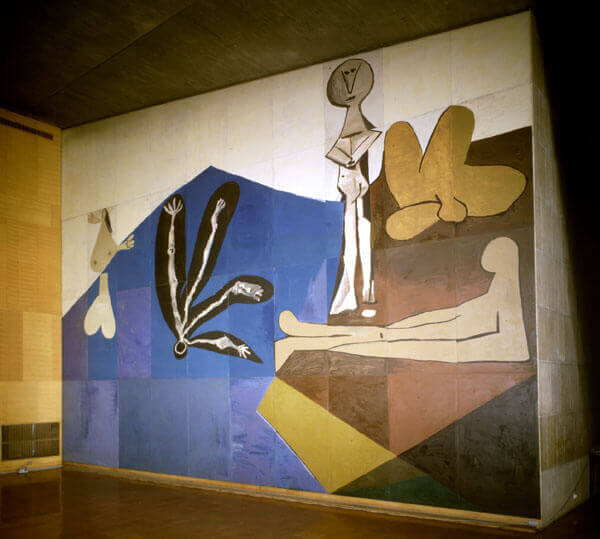T.J. Clark reflects on Picasso's mural Fall of Icarus (1958).
Clark writes: "My argument, then, is that it was only in the real-size, forty-piece Fall of Icarus that Picasso escaped from Cubism – from the studio, from ‘viewpoint,’ from proximity and tactility, from the whole spatial and figurative world of Guernica – and showed us the world after epic. Two things seem decisive. First, to repeat, there was the eventual effect of the non-square shape on the picture’s deployment of surface and depth. ‘Flatness’ of a new kind emerges, peculiarly piecemeal and lacking in structure, floating the scene’s absurd protagonists apart from one another. It is impossible to know how much Picasso knew or cared, at this point in the 1950s, about ‘American-type’ painting. But The Fall of Icarus has the look, especially from ground level, of a burlesque Barnett Newman with figures added by Matisse."
